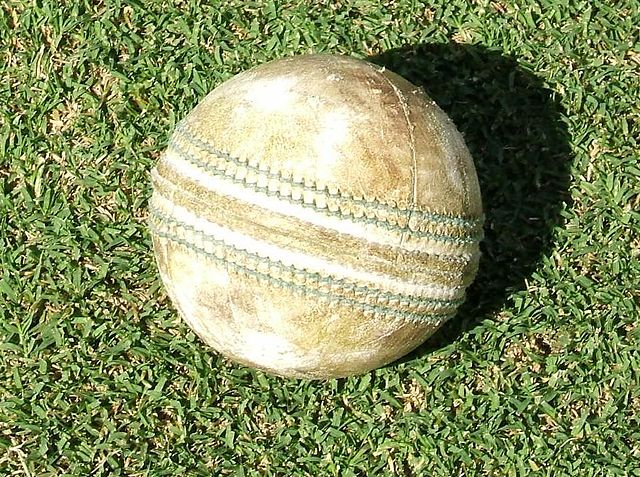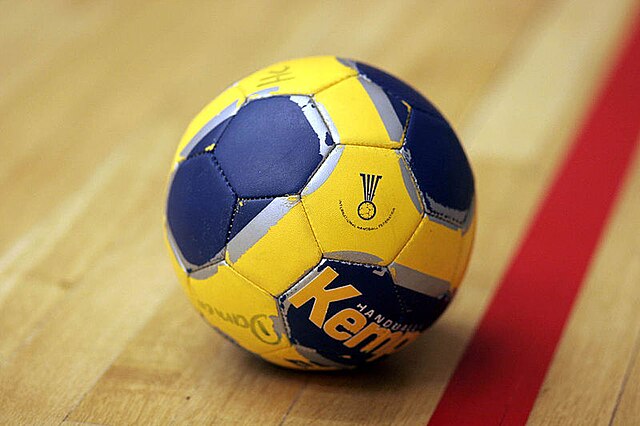A cricket ball is a hard, solid ball used to play cricket. A cricket ball consists of a cork core wound with string then a leather cover stitched on, and manufacture is regulated by cricket law at first-class level. The trajectory of a cricket ball when bowled, through movement in the air, and off the ground, is influenced by the action of the bowler and the condition of the ball and the pitch, while working on the cricket ball to obtain optimal condition is a key role of the fielding side. The principal method through which the batter scores runs is by hitting the ball, with the bat, into a position where it would be safe to take a run, or by directing the ball through or over the boundary. Cricket balls are harder and heavier than baseballs.
A cricket ball
White balls are used in many limited overs cricket matches, especially those involving floodlights (day/night games). This is because a red ball under yellow lights takes on a brownish colour which is very similar to the colour of the pitch.
A pink cricket ball. Pink balls deteriorate more slowly than white balls, but have better night visibility than red balls, making them the most suitable ball for day-night Test cricket.
A used cricket ball
A ball is a round object with several uses. It is used in ball games, where the play of the game follows the state of the ball as it is hit, kicked or thrown by players. Balls can also be used for simpler activities, such as catch or juggling. Balls made from hard-wearing materials are used in engineering applications to provide very low friction bearings, known as ball bearings. Black-powder weapons use stone and metal balls as projectiles.
Group of balls
Russian leather balls (Russian: мячи), 12th-13th century.
Football from association football (soccer)
Handball








